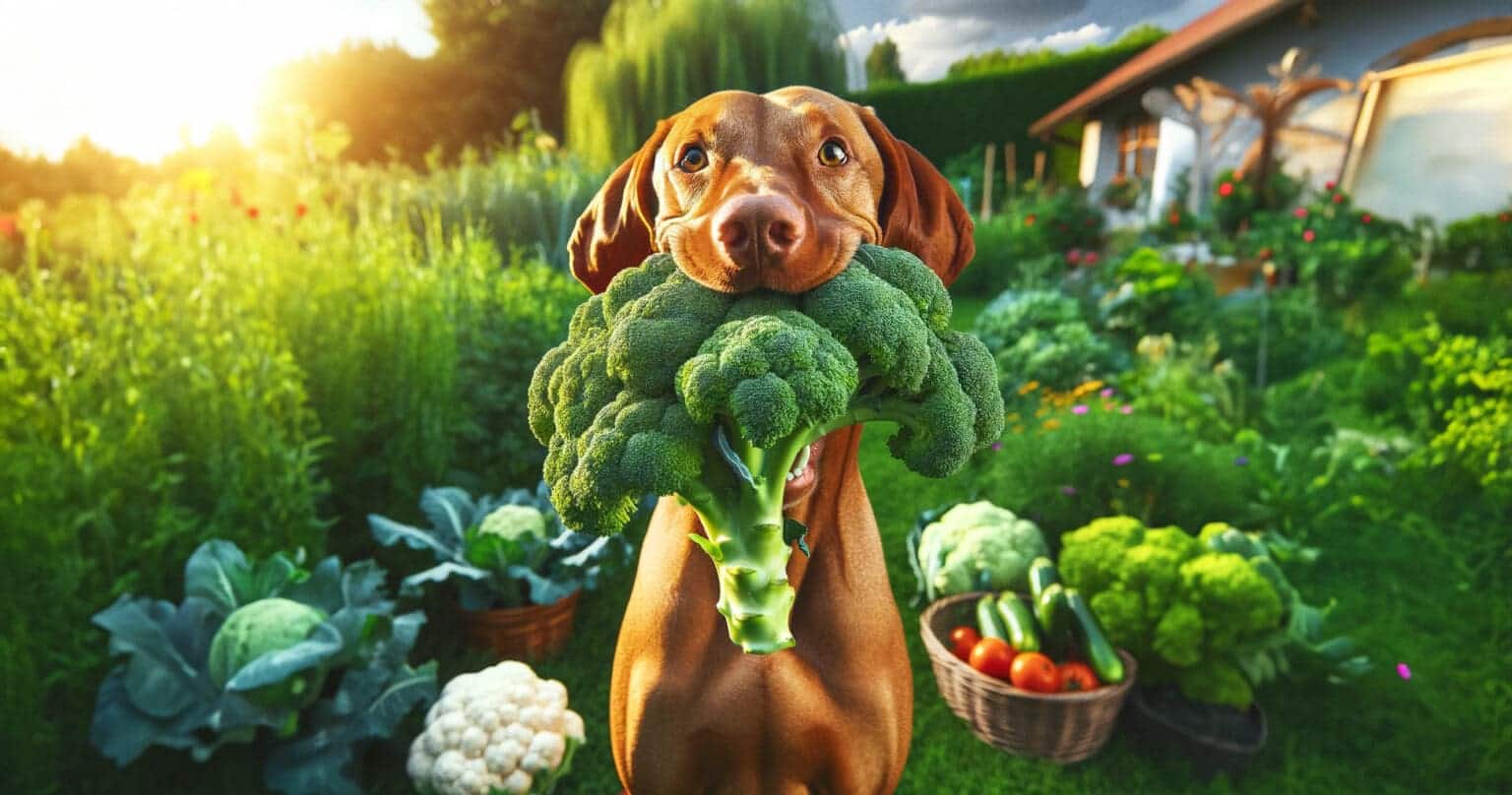Nestled in the heart of Presque Isle, ME, we are proud to be one of the largest suppliers of broccoli on the East Coast. While we’re experts in growing top-quality broccoli and cauliflower, it’s important to note that we are not veterinarians! However, our extensive experience in farming and understanding of fresh produce allows us to offer some insights into a common question pet owners often have: “Is Broccoli Good for Dogs?”
Why Trust Smith’s Farm?
At Smith’s Farm, we have been cultivating Stag Brand broccoli, cauliflower, and potatoes for generations. We ensure that all produce that leaves the farm is of the highest quality. Our commitment to sustainable farming practices and our in-depth knowledge of vegetable growth and nutrition positions us ideally to share insights about their benefits. This expertise applies not just to humans but to our furry friends as well. As a family of dedicated dog lovers, we have always been passionate about the well-being of our canine companions. Our history of caring for dogs gives us a unique perspective on what’s best for them!

Is Broccoli Safe for Dogs?
The short answer is, yes, broccoli can be good for dogs, but with some caveats. Broccoli, which consists of green, tree-like florets at the top and firm, fibrous stalks below, is high in fiber and vitamin C and low in fat, making it a potentially beneficial snack for dogs in moderate amounts. However, caution is advised as the florets contain isothiocyanates, compounds that can cause mild-to-potentially-severe gastric irritation in some dogs. Additionally, the stalks of broccoli, particularly high in fiber, can be hard on a dog’s digestive system if consumed in large quantities. While the short answer is yes, we recommend you continue reading for more safety suggestions.
How Much Broccoli is Safe?
Understanding the Right Amount of Broccoli for Your Pet

Balancing Dog Nutrition with Broccoli
Broccoli for dogs can be a part of a balanced diet, but it should never replace their regular meals. Dogs require a diet that’s tailored to their specific nutritional needs, and while broccoli offers health benefits like vitamins, minerals, and fiber, it doesn’t provide everything your pet needs. Always consider the total diet of your dog when adding cruciferous vegetables like broccoli.
Broccoli is an excellent vitamin C and dietary fiber source, which can support immune health and digestive regularity. However, it lacks the necessary proteins, fats, and carbohydrates to meet a dog’s nutritional requirements. It’s crucial to maintain a balance when adding broccoli or any other vegetable to your dog’s diet. The primary focus should always be on a complete and balanced commercial dog food supplemented by healthy treats like broccoli.
The Risks of Feeding Too Much Broccoli

Feeding your dog too much broccoli can lead to gastrointestinal upset. Broccoli florets contain isothiocyanates, which can be toxic for dogs in high amounts. Understanding the balance between providing a healthful snack and avoiding overfeeding is essential, which can lead to broccoli toxicity.
Symptoms of broccoli toxicity in dogs may include abdominal pain, diarrhea, and vomiting. If your dog shows any signs of distress after eating broccoli, it’s important to consult a veterinarian immediately. To prevent these risks, always adhere to the 10% rule regarding treats and introduce broccoli slowly into your dog’s diet.
Cooked Broccoli vs. Raw Broccoli for Dogs
When deciding whether to feed your dog raw or cooked broccoli, consider that cooked broccoli is generally easier for dogs to digest. Cooking broccoli makes it softer and reduces the risk of choking, especially for smaller dogs or puppies. However, ensure that the cooked broccoli is served plain, without any added oils, spices, or seasonings.
Raw broccoli can be more challenging for dogs to digest due to its tough texture. If you choose to feed your dog raw broccoli, make sure it’s cut into small, manageable pieces to prevent choking hazards. Regardless of whether you serve it raw or cooked, always remove the tough stems and cut them into bite-sized pieces suitable for your breed’s size.
Tailoring Broccoli Intake to Your Dog’s Size and Breed
The amount of broccoli your dog can safely consume may also depend on their size and breed. Larger dogs might tolerate more broccoli than smaller breeds. However, always start with a small amount to gauge how your dog reacts, whether you have a tiny terrier or a large Labrador.
Smaller breeds and puppies, with their smaller stomachs and developing digestive systems, should be given broccoli in very limited quantities. You can gradually increase the amount for larger breeds if they show no adverse reactions. Always monitor your dog’s response to broccoli and adjust their intake accordingly.
How to Safely Introduce Broccoli to Your Dog’s Diet
- Start Small: Gradually introduce broccoli into your dog’s diet. Begin by offering tiny pieces, ensuring that the florets and the stalks are included. These parts differ in texture and nutritional content, so seeing how your dog tolerates each is important. Start with a small amount, perhaps a few small bites, and only as an occasional treat, not a regular part of their diet.
- Cooked vs. Raw: Consider how you prepare the broccoli. While raw broccoli is not harmful, cooking it lightly by steaming can make it easier for dogs to digest. Cooking softens the fibrous stalks and reduces the potential for gastric irritation. Remember to serve the broccoli plain without adding seasonings, oils, or butter, which can harm dogs.
- Observe: After introducing broccoli to your dog, closely monitor their reaction for any signs of digestive distress. Symptoms to watch for include gas, bloating, diarrhea, or changes in appetite or behavior. If you notice any of these symptoms, it might indicate that your dog’s digestive system is not handling the broccoli well. In such cases, discontinue feeding them broccoli and consult your veterinarian for advice.
- Moderation is Key: Remember that broccoli should only make up a small portion of your dog’s diet. It is not a substitute for their regular, balanced dog food. The general guideline is that treats, including fruits and vegetables, should not exceed 10% of a dog’s daily caloric intake.
- Consult Your Veterinarian: Before making any significant changes to your pet’s diet, it’s always a good idea to consult your veterinarian. They can provide personalized advice based on your dog’s health, breed, size, and dietary needs.
Conclusion
Yes – Broccoli, in moderation, can be a healthy snack for your cannine. Introducing it carefully and being mindful of how your pet reacts is essential. Following the steps above, you can safely introduce Smith’s Farm’s favorite vegetable to your pooch and provide them with a healthy treat. Remember, each animal is unique, and what works for one may not work for another. Keep a close eye on how they react and adjust accordingly.
About Smith’s Farm
Smith’s Farm, a family-owned business in Presque Isle, ME, has been a leading supplier of fresh vegetables on the East Coast for many years. Our commitment to quality and sustainability makes us a trusted name in farm-fresh produce.



